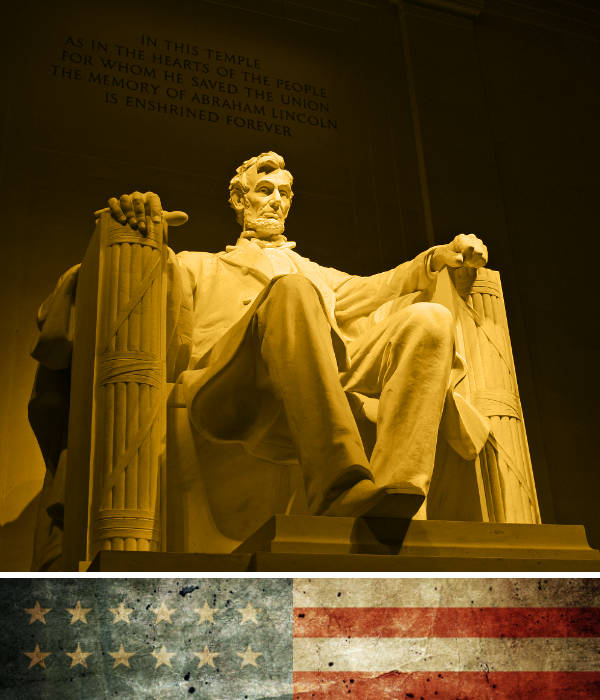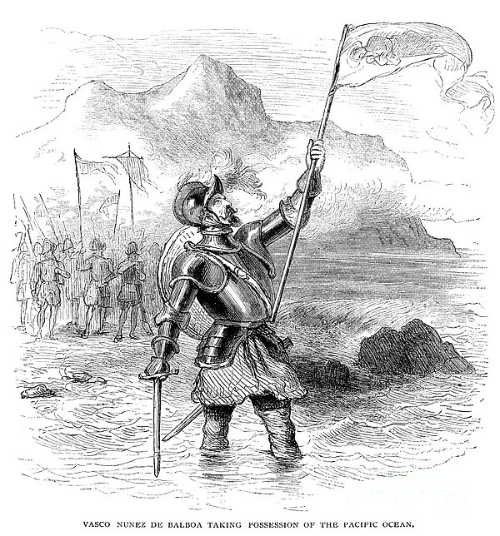Fortune and glory
Searching for the cities of gold

We came to serve God and to get rich, as all men wish to do.
Bernal Diaz del Castillo The Conquest of New Spain
Ultimately Columbus's wildest dreams and promises had all come true (except for the first one, the one about a westward rute to the Indies), even if he never lived to see it. As the true extent, and wealth, of this new world slowly became apparent, so the Spanish Reconquista expanded in scope, from the Iberian peninsula to non-Catholic lands the world over. The Spanish had three main goals in their Age of Discovery: to spread the Catholic gospel; to locate new reserves of natural resources; and to find gold. Lots of gold. In all three they were wildly successful. What was begun by small bands of explorers relentlessly probing the edges of two mighty continents was continued by missionaries and royal administrators as they built an empire that was to endure for 400 years, spanning the western hemisphere from South America to Alaska at its peak. Spain was the world's first truly global superpower. Their arrival, and the flora, fauna and pathogens they brought with them, as well as those they took back to Europe, would transform the Americas, and the world.
Spain's first mainland settlement was founded by Vasco Núñez de Balboa at Santa Maria la Antigua del Darién (in modern-day Columbia) in 1510. There Balboa heard rumours of a great kingdom to the south, on the 'other sea' where men ate and drank from plates and goblets of gold, that he would need at least a thousand men to conquer. Taking the 190 Spaniards he had to hand, Balboa then led them through the jungles and over the mountains of Panama, battling, butchering and plundering the local tribes as he did so, all the way to the shores of the South Sea (the Pacific Ocean) in 1513, which he conscientiously claimed as the property of the Spanish Crown.
Conquest came easy to the Spaniards, but it proved harder to hold onto their new subjects as the diseases they brought with them proved catastrophic for the indigenous Americans (Hispaniola was virtually wiped out within 50 years, while Central Mexico's native population fell from around 15 million in 1519 to approximately 1.5 million within a century). The Spanish had an insatiable demand for labour to mine their gold, to harvest their sugar and to farm their cattle, but as local populaces crashed they were forced to look further afield for replacements: 1518 saw the first shipments of slaves from West Africa (although settlers had already brought African slaves with them to Hispaniola), and slavers raided villages throughout the Caribbean and Gulf of Mexico in search of fresh bodies.
It was from these encounters that the Spanish learned of the vast empires to the south, and set in motion the dramatic and brutal advance of the conquistadors, Spanish warriors and explorers who sailed, rode and marched through Mesoamerica in search of fortune and glory, small bands of several hundred treasure hunters and mercenaries who toppled empires of hundreds of thousands, of millions.
The new world was, of course, an old world. The first of the great civilisations the Spanish encountered was the Aztec Empire, which had grown froma Triple Alliance of cities until it subsumed over 400 local tribes. At its centre was the 'foundation of heaven', great island city of Tenochtitlán. Built by the Mexica in Lake Texcoco, Tenochtitlán was several times larger than contemporary London, with over 150,000 citizens. At its centre stood the Templo Mayor (Great Temple), capped by the twin temples of the Sun God and the Rain God, and surrounded by lesser temples (to the Feathered Serpent, the Lord of the Smoking Mirror, and the Snake Woman, among others), palaces and pyramids, canals, bridges, and fields that seemed to float upon the surface of Lake Texcoco. And Tenochtitlán was ruled over by a demigod, Moctezuma II, son of Ahuizotl: revered by his people, none of whom dared look upon his face on pain of death, he had 3,000 servants, dressed from head to foot in gold and glittering jewels, and walked on slippers made from jaguar skin.
Such as they were, with their greatness and their weaknesses, their ideal of order and their cruelty, their obsession with the mystery of blood and death, their sensitivity to the beauty of flowers, birds and gems, their strength of religious feeling - strong to the point of suicide - their excellent practical organisation of the state, their attachment to their land and their maize, which still did not keep their eyes from turning continually to the stars - with all this, these ancient Mexicans were civilised men.
Jacques Soustelle Daily Life of the Aztecs
Aztec culture was obsessed with death, and with regular human sacrifice to appease the gods and avert armageddon: prisoners of war had their hearts ripped from their chests at the summit of the Templo Mayor, and at an inauguration in the reign of Ahuizotl its steps ran red with blood for four days as 4,000 were slaughtered there. Temple walls were covered in the skulls of the fallen, their walls literally painted with blood, and what remained of the victims was often eaten by their captors. The Aztecs believed that they lived in the Fifth Age of the world, one destined to end in destruction like all the others, and this cataclysm was an ever-present possibility.
Hernán Cortés landed on the Yucatan Peninsula of Mexico in 1519 with a force of 530 soldiers, thirteen horses and a few cannon. Cortés was another minor nobleman from Spain looking to better his prospects elsewhere. This was a rash move, by a man with no experience of leading soldiers, in mutiny against the Spanish government of Cuba: upon declaring himself governor or Veracruz, answerable only to King Charles II, Cortés either beached or burned his ships, to ensure that there was no turning back, for him or any of his company. When he heard of the might and riches of the Aztec Empire, and of its divine ruler Moctezuma, he headed inland, through unknown territory with no way back, a force of hundreds marching on an empire of millions. They had guns, yes, but not enough. And they may, initially, have seemed as gods (there is a belief that the Aztecs may have considered Cortés to be an envoy of Quetzalcoatl, the feathered serpent god of the wind, creator of the fifth cycle of men from the bones of their predecessors), but the Aztecs weren't stupid, and it was soon apparent that they were men, and died like them.

But the Spanish grew in strength as they approached Tenochtitlán, bolstered by an alliance of tribes built through conquest and diplomacy, indigenous peoples ready to turn to a devil they didn't know to free themselves from Aztec rule, a rule that cost them so dearly in treasure and sacrifice. When they arrived in November 1519, Moctezuma chose to allow Cortés and his men into the city, the better to see and understand these newcomers. It was a catastrophic error, for the Spaniards siezed the divine person of the Emperor, and through him wielded absolute power over the city, melting down Ahuizotl's treasure as tribute to the King of Spain and erecting an altar to their Christian god on the Templo Mayor. It was unthinkable to the Aztecs that a god could have such feet of clay, and when Moctezuma's rule became untenable, so did did the Spaniards' control. After a massacre of Aztec nobles in July 1520 inside the Great Temple the city revolted: Moctezuma was slain (whether by his own people or the Spaniards we don't know) and the Spanish forced to flee, many drowning in Lake Texcoco with their armour and the booty they were trying to make off with. The survivors fled to nearby Tlaxcala, a stronghold of the anti-Aztec coalation, and then set about subduing or co-opting the Empire piece by piece until only Tenochtitlán remained.
It was already over. The Aztecs fell not to the Spanish, nor even to their tribal allies, but to a foe they could neither fight nor see. In March 1520 a Spanish flotilla landed in Mexico: though it came to apprehend the mutinous Cortés it bore the long-prophesised destruction of the Aztecs. Smallpox devastated the empire, leaping from village to village and reaching the Valley of Mexico and Tenochtitlán by September. Priests prescribed prayer, and cold baths, and crushed squashed black beetles onto sufferers' sores, all to no avail. Around a quarter of the population died (far more in densely populated areas), most of the army, and the newly-installed emperor Cuitlahuc. When the Spaniards marched back into Tenochtitlán in August 1521 they had to pick their way through streets littered with bodies. The city was plundered, the Great Temple levelled, and the Spanish capital of Mexico City built upon the ruins.
As the Indians did not know the remedy of the disease…they died in heaps, like bedbugs. In many places it happened that everyone in a house died and, as it was impossible to bury the great number of dead, they pulled down the houses over them so that their homes become their tombs.
Toribio de Benavente Motolinia
Cortés's triumph was replayed even more improbably when Francisco Pizarro began the conquest of the Inca Empire, the greatest of the pre-Columbian empires which grew from the Andean mountains and extended from modern-day Chile and Argentina all the way up the west coast to Colombia. This was an empire of monumental works, of great stone palaces and roads linking all parts of their towering mountainous domains, and a kingdom without money, built upon reciprocal exchanges of goods and services, in which all the land and everything that gave life flowed from the Sapa Inca, the supreme ruler, the son of the Sun.
The conquistadors saw rich pickings, so much so that Pizarro first sailed back to Spain to secure the right of conquest of this ancient empire for himself. He and his brothers led a return expedition to Peru in 1532, landing on the shores of a kingdom riven by civil war between the brothers Huáscar and Atahualpa and alredy succumbing to the unstoppable advance of typhus, influenza and smallpox from the north. The victorious Atahualpa chose to grant Pizarro's request for an audience at Cajamarca, a mountain town deep within his domains. An Inca army 80,000 strong was camped along the ridges above the town, en route to their glorious entrance into the capital city of Cuzco. What had they to fear from fewer than 200 Spaniards?
Such was Atahualpa's certainty that he chose to leave the bulk of his force camped outside the city walls, entering only with his retinue of around 7,000. They were mostly unarmed, many dressed in bright blue robes and the emperor was carried aloft in a litter decorated in silver and vivid parrot feathers. The Spaniards were hidden in buildings around the central plaza, cavalry concealed in the adjoining alleyways and four small cannon in one building. As the empty square filled with Atahualpa's procession, the Spanish Friar walked out to address the Sapa Inca, to ask his submission to the Catholic faith and lay the foundation of concord, brotherhood, and perpetual peace that should exist between us
. Atahualpa declined. The Spanish attacked.
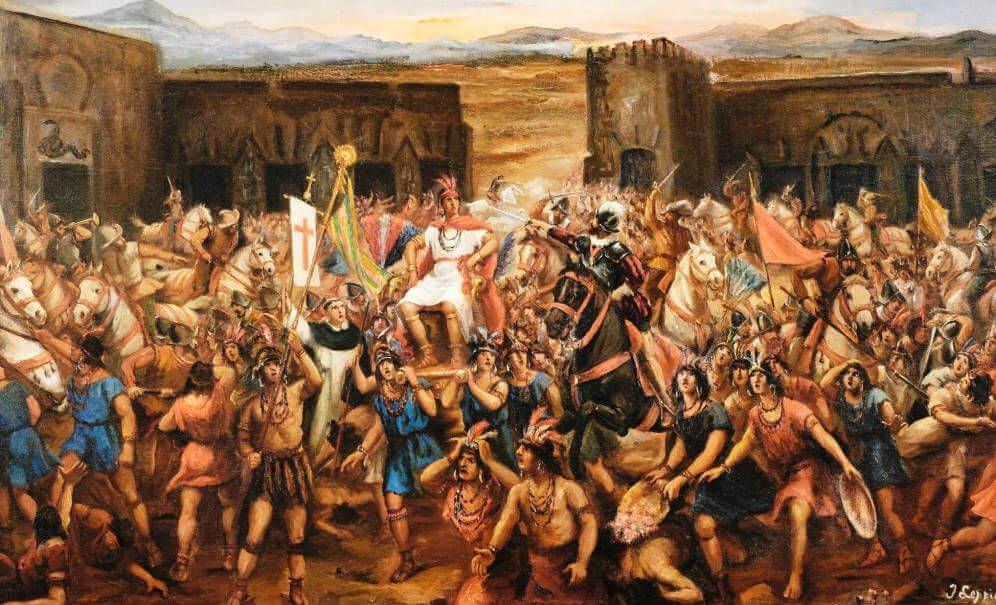
It was a massacre. Cannon and gunfire, followed up by a cavalry onslaught, shattered the Incan ranks. Pizarro's only hope was to sieze Atahuapa himself, and they charged his litter, cutting down his bearers who stood frozen in disbelief. Attendants threw themselves in front of the Spanish swrods while others attempted to hold the empoeror aloft with bloody stumps, but to no avail: Pizzaro took the Sapa Inca and the Incan force routed in terror, leaving 2,000 dead.
The Spanish demanded a huge ransom for their captive, enough gold to fill a room seven metres by five metres, and twice that in silver. It was paid, and Atahualpa even consented to be baptized a Christian, but he was executed regardless, garrotted in August 1533. The Spanish took Cuzco, installing their own puppet ruler, and in 1535 Pizarro founded the city of Lima on the coast: in 1542 they declared it the Viceroyalty of New Castile (later the Viceroyalty of Peru). The victors fell out over the spoils, with both Pizarro and his fellow conquistador Diego de Almagro claiming jurisduction over Cuzco. Pizarro's brothers defeated Almagro's forces at the Battle of Las Salinas in 1538, and Almagro too was executed soon after. In 1541 a group of his supporters attacked Pizarro's palace in Lima and Pizarro hmself was slain along with many of his defenders.
The Incas lacked the use of wheeled vehicles. They lacked animals to ride and draft animals that could pull wagons and plows... [They] lacked the knowledge of iron and steel... Above all, they lacked a system of writing... Despite these supposed handicaps, the Incas were still able to construct one of the greatest imperial states in human history.
Gordon McEwan The Incas: New Perspectives
Little remains of these ancient civilisations, their cities destroyed and their treasures melted down to raw bullion. Epidemics depopulated vast regions, and Spanish artisans, traders and peasant farmers took their place, along with slaves to work the fields and the mines. As they intermaried they filled the colonies with mestizos (children of Spanish and Indians) and mulattoes (children of Spanish and black people). For all the riches the Spanish plundered, the rivers of silver and cities of gold, the sugarcane and rum, and the slaves they chained to harvest them, they were also responsible for some of the Americas’ most enduring imports. They brought horses and cattle, introduced oranges to Florida in 1565, and of course the first African slaves. Most significantly for the native Americans, they brought smallpox, to Hispaniola in 1509 and the mainland in 1520, as well as typhoid and yellow fever, influenza, cholera and malaria (this one most likely came with the English in 1607), the mumps, measles, and the bubonic plague. In a typically slanted balance of payments, all they took back to Europe by way of exchange was syphilis.
The Columbian Exchange
New World to Old
Old World to New
Animals
Turkeys, llamas, alpacas, guinea pigs
Plants
Corn, potatoes, sweet potatoes, tomatoes, squashes, pumpkins, peppers, chili peppers, tobacco, chocolate, vanilla, blueberries, pineapple, cassava, peanuts, cashews, quinine, sunflowers, marigolds
Diseases
Syphilis
Animals
Horses, cattle, sheep, chickens, honey bees
Plants
wheat, barley, oats, soybean, sugarcane, onions, lettuce, apples, oranges, lemons, limes, peaches, pears, watermelon, bananas, olives, chickpeas
Diseases
Smallpox, measles, typhus, cholera, bubonic plague, malaria
The South American continent was tranformed almost beyond recognition within a hundred years of Columbus' arrival, while the gold that was siezed helped redraw the maps of the Old World as well (and in the longer term, new crops from the Americas helped drive an agricultural revolution in Europe).
In comparison to the vast successes and material rewards of their explorations to the south, Spain’s North American ventures met with more meagre returns. Ponce de León, who had accompanied Columbus on his second voyage and later governed Hispaniola and Puerto Rico, sailed north in search of the fabled fountain of youth at Bimini in 1513 and reached the ‘island’ of Florida (named for the recent Easter holy day, Pascua Florida), but hostile natives dissuaded him from attempting any settlement. In 1521 he returned with 200 men and a mision to conquer, but they met with stiff resistance from the natives, and León died from his injuries after he was shot with a poisoned arrow.
Rumours abounded of treasures to be found in the north by those brave enough to venture there. Legends spoke of the seven cities of Cíbola, magnificent riches awaiting in seven geat cities founded by priests who had left Eurpe in antiquity. In 1539 Hernando de Soto, a veteran of Pizarro's Incan campaign, tried his luck again with a charter from Charles V to conquer Florida. He assembled an expedition of adenturers (including treasure seekers from as far afield as Greece, England and Africa) 500-strong and set out for Florida. Unaware this was part of the mainland, they searched the Appalachian Mountains in vain for gold, and then onwards through Tennessee, Alabama and Georgia, reaching the Mississippi River on 8th May 1541.
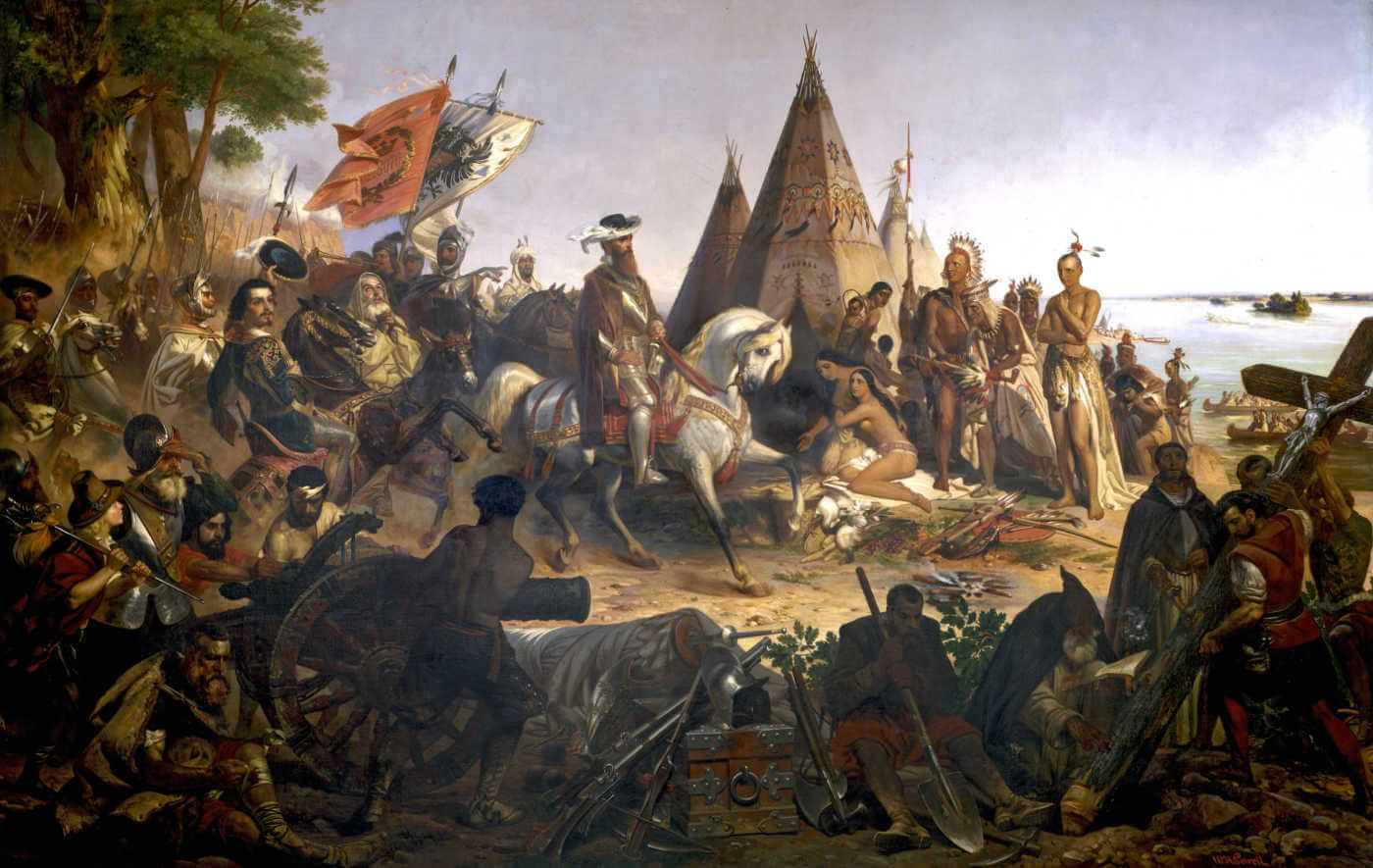
They crossed jungles, forests, swamps, rivers and mountain ranges, enslaving and slaughtering as they went, and hundreds of them died in battle or from disease (some 200 alone were killed in the Battle of Mabila in a fortified Indian village in Alabama, and over ten times that many Indians, making this perhaps the bloodiest battle ever fought in North America outside of the Civil War). De Soto died of a fever in 1541, and the survivors made their slow way back to Mexico on makeshift boats down the Mississippi. Half of the 620 or so who set out returned, after four years, with neither gold nor colonies to their name. De Soto had claimed huge swathes of the north for the King of Spain. On this evidence, Spain had little use for them.
Another exploratory force led by Francisco Vázquez de Coronado headed north from Mexico in 1540, through New Mexico, and Arizona by way of the Grand Canyon and as far north as Kansas, but found only scattered native American settlements, following rumours of golden cities and finding only villages of mud. Coronado's expedition probably came within a few hundred miles of de Soto's, and returned to New Spain equally empty-handed.
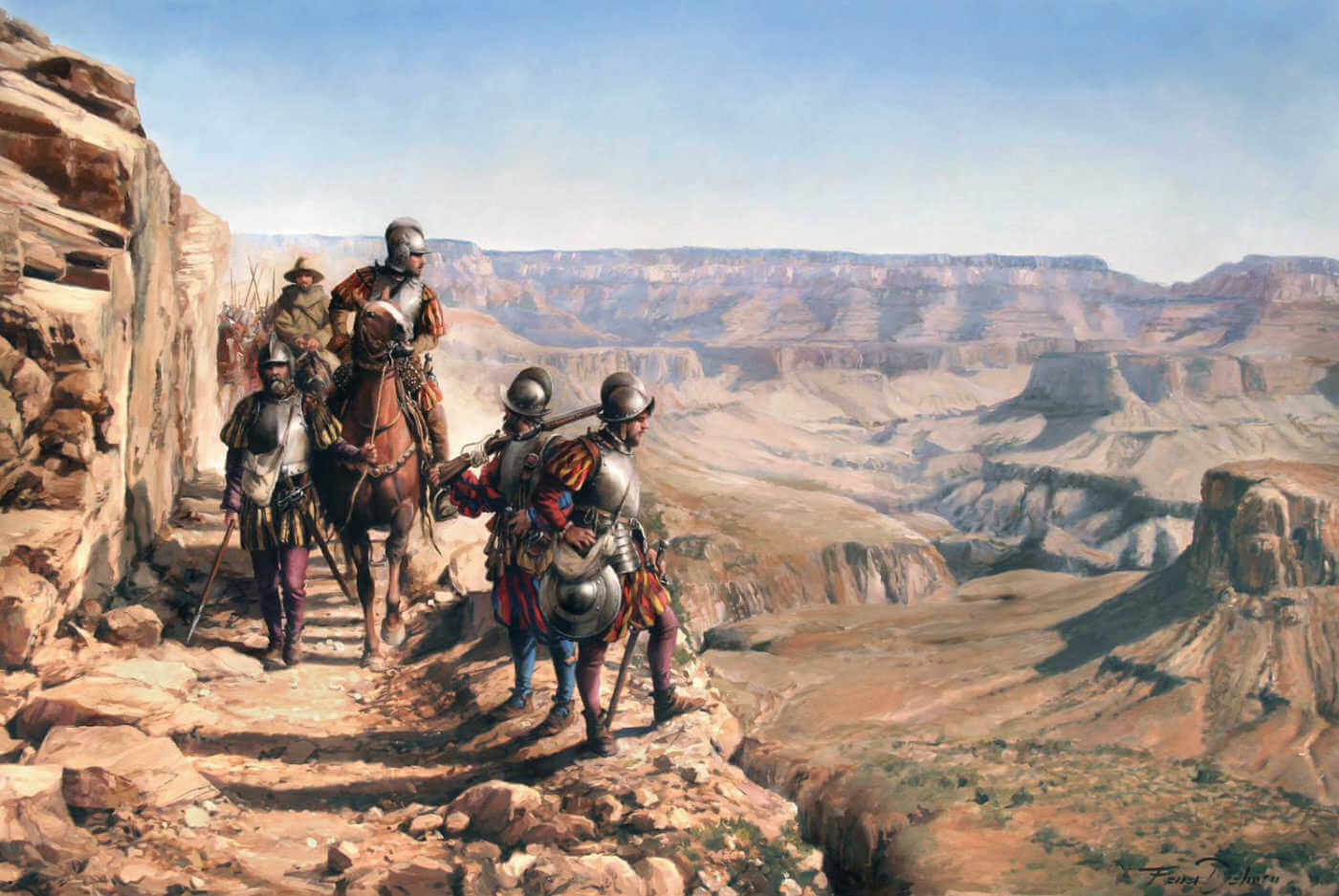
The north amounted to little more than broken promises and failure for Spain, certainly set against the stream of riches that poured from the south. There was a further quest for Cíbola some fifty years later, when Juan de Oñate took 400 men, women and children north into New Mexico in 1598. There was no gold, but after still more slaughter and brutal punishments meted out to the Acoma Pueblo tribe, he was recalled to Mexico City and banished for his acts of cruelty to both natives and settlers. He is sometimes remembered as the 'Last Conquistador', one last repeat of an already bygone age. In 1602 Sebastián Vizcaíno sailed up the west coast, reaching Monterey Bay, and returned with meticulously-detailed charts of the coastline and fulsome praise for the region's possibilities for settlement. But he found no treasure, nor mines, nor any lost cities of legend. California's great gold rush would wait another 250 years, and Spain's glittering prize remained the south.
We Spaniards know a sickness of the heart that only gold can cure.
Hernán Cortés
Bibliography
- Brogan, H. (2001) The Penguin History of the United States of America (2nd ed.), London, Penguin.
- Hakim, J. (2003) The First Americans, Prehistory - 1600 (3rd ed.). New York, Oxford University Press.
- Nunn, N. & Qian, N. (2010) 'The Columbian Exchange: A History of Disease, Food, and Ideas' Journal of Economic Perspectives, vol. 24, no. 2, pp. 163-188.
- Taylor, A. (2013) Colonial America: A Very Short Introduction. Oxford, Oxford University Press.

